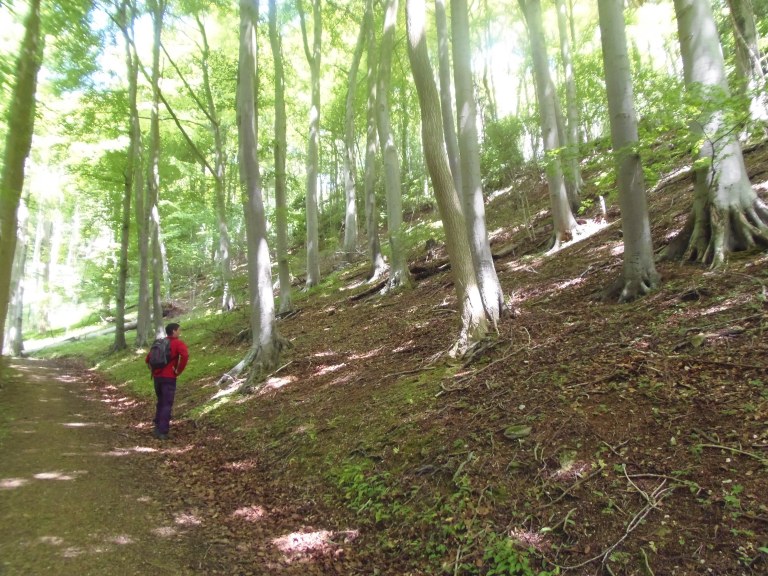I have been fortunate, after 28 years of working for the National Trust, to have been given the opportunity this summer to take a sabbatical from my work with the team at Ebworth, and to indulge myself in a couple of projects that I have always wanted pursue. Whilst we are privileged in our work to get involved in some really interesting conservation work (which let’s face it, is what the National Trust is foremost about), the demands on our time just don’t allow us to explore or take our interests much further than is required to deliver a project or piece of work. It’s important to re-engage yourself with what really drives you, and this summer this is exactly what I aim to do.
The Red Helleborine (Cephalanthera rubra) is one of our rarest, and some may say, most beautiful orchids. First discovered in the 1790s on “Minchin Common”, Gloucestershire has been the stronghold for this species for over two centuries. In the second half of the 20th century single sites were discovered in Buckinghamshire and Hampshire, and these have persisted along with a site in Gloucestershire that I and members of the team have been involved in managing. There are a number of historic sites in the beech woods around Stroud, but the exact locations are difficult to determine as the locations have always been a guarded secret. In fact it was the custom to cut off any flowering plants so that the colonies were less easy to spot. We think the plant has been found at as many as twenty sites over the years, the locations of which in some cases are known to only a few yards, others as individual woods and in some cases by even vaguer descriptions such as the “Slad Valley”. Some of the records are well over a hundred years old so the woodlands have no doubt changed, in some cases perhaps dramatically.
![$_57[2]](https://heartofthecotswolds.files.wordpress.com/2016/06/572.jpg?w=656&h=1010)
Red Helleborine drawn from the original plant collected by Mrs Smith from “Minchin Common” in 1796.
The plan is to visit these historic sites (or what we think were the sites) to see why the plants may have been there in the first place, what the locations had in common, and to see if they are still suitable for the plants now. I will be doing much of the surveying with a fellow enthusiast, John, and enlisting some of the ranger team to help as well. Of course I am holding on to the hope that there may even be the chance of finding this illusive plant, however it will be like looking for a needle in a haystack, and it could be that there is no needle to find. True to tradition, I probably wouldn’t be able to reveal where we have found plants if we do, however I don’t propose cutting off any of the flowers, and would probably find it hard not to drop a hint that we have found something in a future blog.

The White Helleborine is a relative of the Red Helleborine and can be found in similar habitats. This was seen in several of the woodlands we have visited so far.
Whilst I have been involved in the management of Cotswold beech woods for 25 years, I cannot say that I really know much about them. Why are they there in the first place, what is their extent, how did they develop over the years, what are the current issues and how should they be managed into the future? These are all questions I have asked myself over the years but never really had the time to look into. There is very little written about these woodlands that are such a feature of our landscape and lives. I have set myself the task of visiting as many of the woodlands as is possible with the hope of being able to start to answer some of these questions. I really don’t know what I am going to discover.

Tim scans a likely spot.
David
Lead Ranger

I wish you every success in the search, I’m going to try myself over the next week or two.
Cheers
Darren
LikeLike